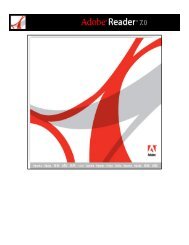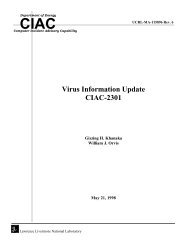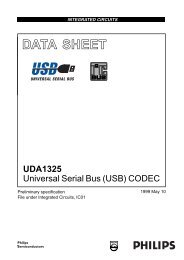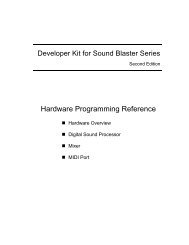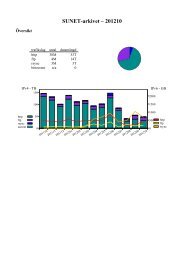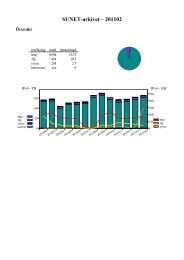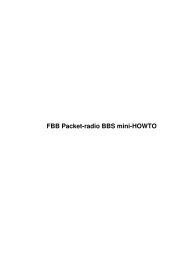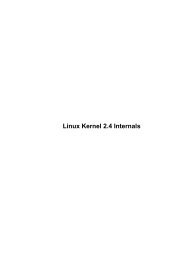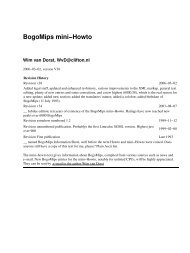The Webcam HOWTO - The Linux Documentation Project
The Webcam HOWTO - The Linux Documentation Project
The Webcam HOWTO - The Linux Documentation Project
Create successful ePaper yourself
Turn your PDF publications into a flip-book with our unique Google optimized e-Paper software.
2. Enabling Support for Your (<strong>Webcam</strong>) Hardware<br />
in <strong>Linux</strong><br />
2.1. Drivers and Modules<br />
For your webcam to work you will need support for the connection and support for the actual camera<br />
hardware. Those who are already versed in kernels and modules and how to load them should skip to Section<br />
2.2, which addresses support of the connection type. If you know your USB, IEEE 1394 or whatever bus you<br />
will be connecting your camera to is already configured and working, you should move on to the list of<br />
specific webcam hardware listed in Section 2.3.<br />
<strong>Webcam</strong> drivers are usually available one of three ways: within the kernel, as a compilable stand alone<br />
module, or available as a pre−compiled (packaged) binary driver from your <strong>Linux</strong> distribution.<br />
2.1.1. Module or In−Kernel?<br />
As a rule, often the stock kernel, or working part of the operating system, of your initial installation may<br />
already have support for what you need. Your <strong>Linux</strong> distribution vendor has likely enabled the most common<br />
options already, including the bus, or connection type, and drivers for common camera models. <strong>The</strong> driver<br />
exists either as a loadable module or within the already running kernel.<br />
An easy way to tell if the driver is enabled is to use the dmesg command piped into less (for easy paging) to<br />
look for an acknowledgement that it was loaded when your system started up:<br />
$ dmesg | less<br />
...which may yield something like the following, depending on your hardware:<br />
Dec 18 17:35:18 localhost kernel: hub 5−0:1.0: USB hub found<br />
Dec 18 17:35:18 localhost kernel: hub 5−0:1.0: 2 ports detected<br />
Dec 18 17:35:18 localhost kernel: <strong>Linux</strong> video capture interface: v1.00<br />
Dec 18 17:35:18 localhost kernel: quickcam: QuickCam USB camera found (driver version QuickCam<br />
Dec 18 17:35:18 localhost kernel: quickcam: Kernel:2.6.7 bus:1 class:FF subclass:FF vendor:046<br />
Dec 18 17:35:18 localhost kernel: quickcam: Sensor HDCS−1000/1100 detected<br />
Dec 18 17:35:18 localhost kernel: quickcam: Registered device: /dev/video0<br />
Dec 18 17:35:18 localhost kernel: usbcore: registered new driver quickcam<br />
If you don't see it, the particular driver may exist as a loadable module. If you know what that module is<br />
named, try using find; in this example we are looking for the 'ibmcam' module:<br />
$ find /lib/modules −name ibmcam.o<br />
Note that up until the 2.4 series modules had the suffix .o; for 2.6+ series kernels this was replaced with .ko.<br />
You can get a list of all modules available by typing the following at the command line:<br />
$ ls −R /lib/modules/`uname −r`/kernel<br />
Where `uname −r`, surrounded by forward tick marks, is your kernel version number. <strong>The</strong> following output is<br />
an example of what you might find in a USB webcam−ready kernel , where everything is loaded as a module<br />
(all but the relevant lines have been edited for brevity):<br />
./usb: usbvideo.o usbcore.o ibmcam.o<br />
2. Enabling Support for Your (<strong>Webcam</strong>) Hardware in <strong>Linux</strong> 3




